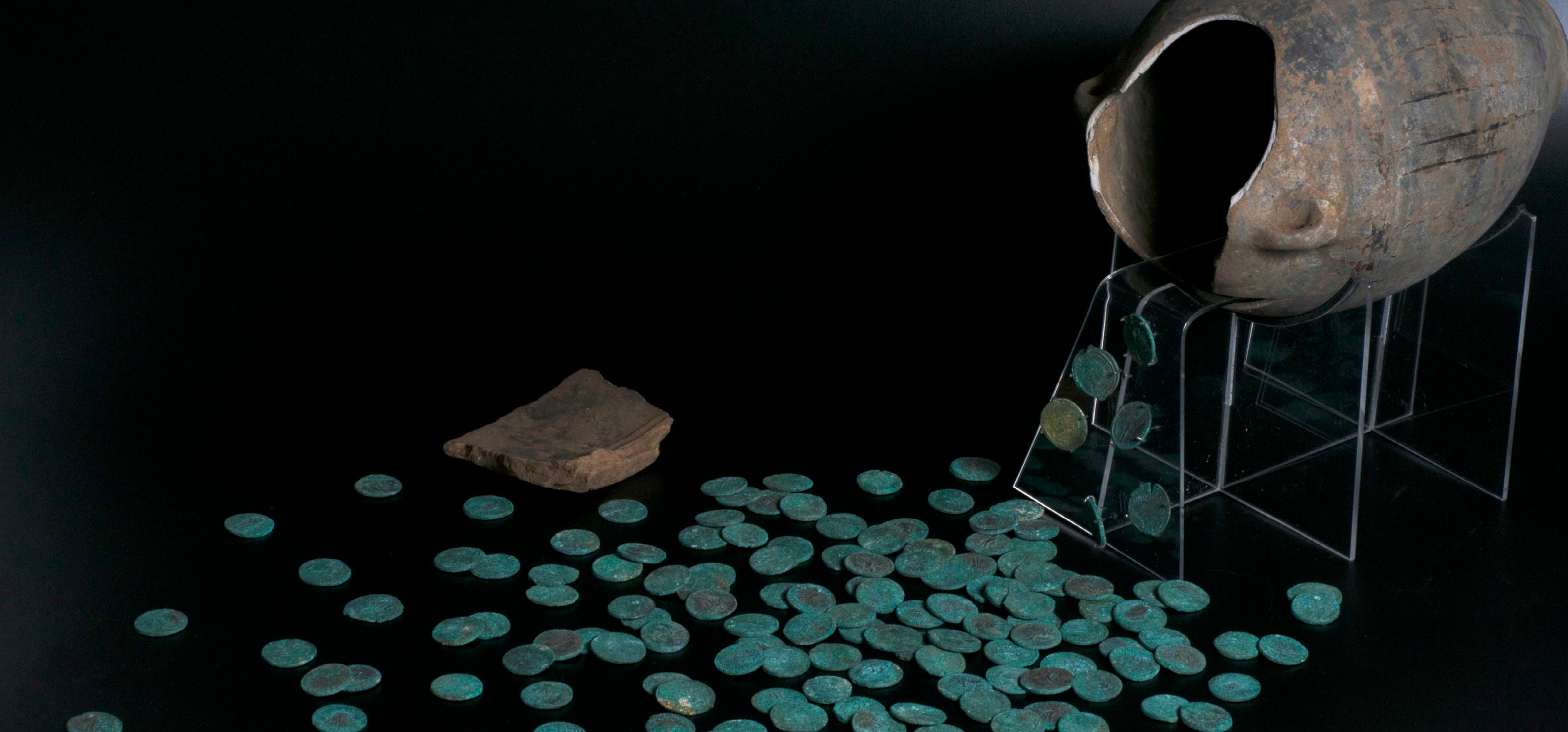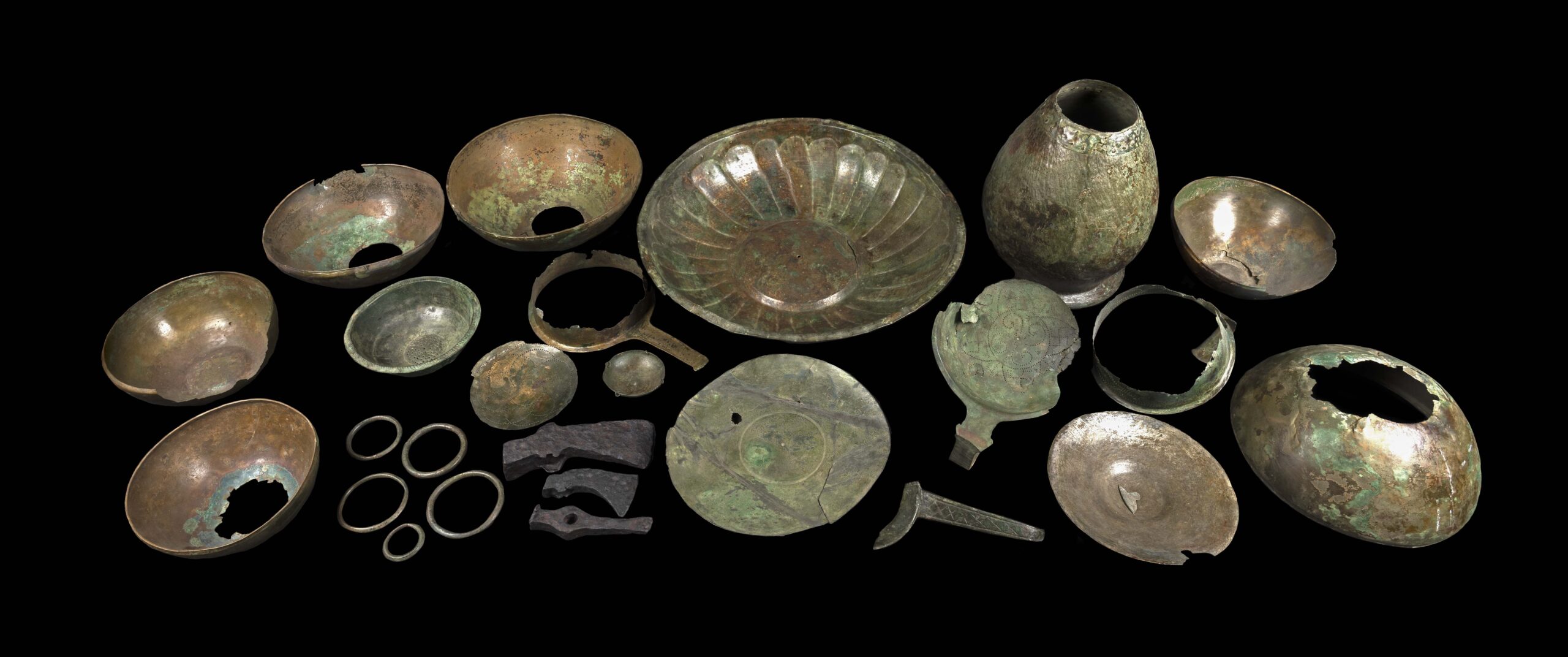The Roman money saving secret that banks don’t want you to know

The Roman money saving secret that banks don’t want you to know
Are you looking for a way to save some cash? Sick and tired of dealing with banks, paperwork and fluctuating interest rates?
Well these trusty tips from those reliable Romans might be for you. Here are four sure fire ways of protecting your cash and making it work for you!
1) The Tadcaster Hoard

AD 192
Carrying your loose change in a purse may seem like an obvious choice but this one has a twist.
The Tadcaster hoard contains four silver denarii stored within a purse designed to be worn on the arm. The only way to remove the coins was to remove the purse from the arm. Or the arm from the body!
The coins inside this purse were certainly more than loose change and could buy a Roman legionary a fine pair of boots or imported luxuries such as olive oil.
Definitely worth keeping safe!
2) The Binnington Carr Hoard

AD 75
What better way to save your precious pennies than by hiding them in a bell!
The Binnington Carr hoard contains 12 silver denarii within a copper alloy bell and was buried close to a Roman road toward the coast. It was buried around AD 75, just four years after the 9th Legion arrived in York. Both the bell and the coins were unusual objects at the time and were probably brought to Yorkshire by the incoming Roman soldiers.
The hoard was discovered in around 1876, nearly 2000 years after burial. A ringing endorsement for Roman financial security.
3) The Wold Newton Hoard

Why not go big with your savings and really reap the benefits of secure storage.
The Wold Newton Hoard contains 1,857 copper coins which were hidden within a ceramic pot and buried in a field in the East Riding. This is a lot of money, roughly equivalent to a legionary’s annual salary, three year’s salary for a carpenter or six years for a farm labourer. It could buy 700 chickens, 2,000 of the finest fish or 11,000 pints of beer!
When studied the hoard was found to contain nine different layers of money, with the oldest coins at the bottom, suggesting more coins were added over time.
The perfect way to meet your long-term savings goals!
4) The Knaresborough Hoard

AD 300 – 400
Short on cash? Then why not bury your pots and pans! Eventually, they become collectable and worth a fortune!
The Knaresborough Hoard is the largest Roman bronze vessel hoard known in Britain! Discovered in 1864, the contents of the hoard originally filled a large sack but most were lost when they were accidentally melted down. The Yorkshire Museum has 28 objects form this hoard in its collections.
The hoard contained some beautiful wine strainers so, even if you don’t see a huge financial return, you can still have a good time!
Each of these hoards were kept safe and secure for over 1000 years. Clearly the Romans were on to something!
Latest News
- Living Art in York Museum Gardens: Harland Miller’s ‘Far Out’ in Florals.
- From the Factory Floor: York Castle Museum launches appeal for information about the confectionery community in the city
- York Museums Trust launch Creative Conversation Box Loan Scheme to support people with memory loss and social isolation
- Summer at York Castle Museum 2025
- Finding nature in the heart of urban York: York Museum Gardens wildflower meadow is back.



